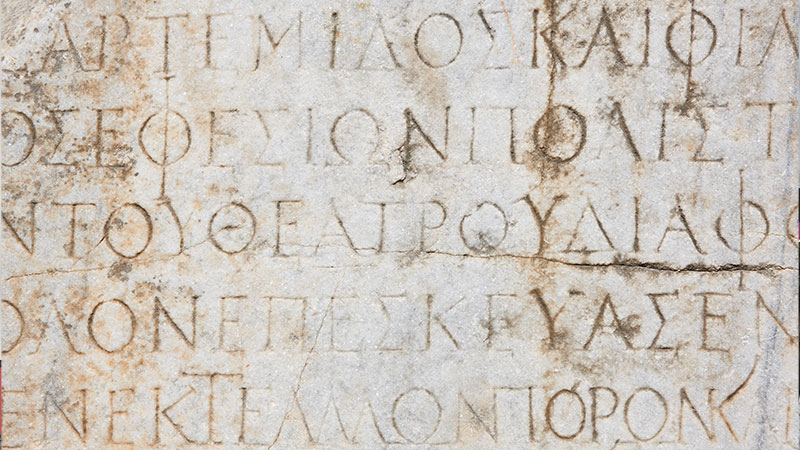Playlist
The origins of uppercase and lower case letters
Majuscule and minuscule are terms used in typography to refer to two different styles of lettering or script. They are often associated with uppercase (capital) and lowercase letters, respectively, in the modern English alphabet.
Majuscule: Majuscule letters are also known as uppercase or capital letters. They are characterized by their larger size and more ornate design. The origins of majuscule lettering can be traced back to ancient Roman inscriptions, where they were used for monumental inscriptions and manuscripts. These letters were typically more angular and blocky in form. Over time, majuscule lettering evolved, incorporating more elaborate and decorative elements.
Minuscule: Minuscule letters are also known as lowercase letters. They are smaller in size and generally simpler in design compared to majuscule letters. The development of minuscule script is often attributed to the Carolingian Renaissance, a revival of culture and learning that occurred during the reign of Charlemagne (late 8th and early 9th centuries). This revival led to the standardization and simplification of writing, making texts more accessible and easier to reproduce.
The shift from exclusively using majuscule letters to incorporating minuscule letters marked a significant turning point in the history of writing. Minuscule scripts were more suitable for writing in books and manuscripts due to their smaller size and efficient design. This change also facilitated the spread of knowledge and literacy throughout medieval Europe.
It’s important to note that the distinction between majuscule and minuscule letters is closely tied to the development of the Latin alphabet and its variations. Other writing systems and cultures have their own unique styles and distinctions that might differ from the majuscule-minuscule convention.
In modern times, majuscule letters are typically used at the beginning of sentences, for proper nouns, and for emphasis, while minuscule letters are used for the main body of text. This convention has been standardized in various writing systems and is an integral part of typographic design and communication.
Brief History of the Alphabet
Proto-Sinaitic Script (c. 18th-15th century BCE): The earliest precursor to the alphabet is believed to be the Proto-Sinaitic script, which emerged in the Sinai Peninsula. It consisted of a small set of abstract symbols, possibly representing consonant sounds. This script is considered a transitional stage between more complex writing systems and the alphabetic system.
Phoenician Alphabet (c. 12th century BCE): The Phoenicians, a seafaring civilization in the ancient Mediterranean, are credited with developing the first true alphabetic writing system. They simplified the Proto-Sinaitic symbols, reducing them to a set of 22 consonant symbols. The Phoenician alphabet was widely used for trade and communication among different cultures.
Greek Alphabet (c. 9th century BCE): The Greeks adopted and modified the Phoenician alphabet to suit their own language, adding vowel symbols to represent the distinct vowel sounds in Greek. This innovation allowed for more accurate representation of their language’s phonetics.
Etruscan Alphabet (c. 8th century BCE): The Etruscans, an ancient civilization in Italy, borrowed the Greek alphabet and adapted it for their language. This adapted alphabet later influenced the development of the Latin alphabet.
Latin Alphabet (c. 7th century BCE – 3rd century CE): The Latin alphabet, derived from the Etruscan alphabet, became the foundation for many modern alphabets, including those used for English, Spanish, French, and other languages. It spread through the expansion of the Roman Empire and continued to evolve over time.
Cyrillic Alphabet (c. 9th century CE): The Byzantine monk Cyril, along with his brother Methodius, created the Cyrillic alphabet to write the Slavic languages. This alphabet drew from the Greek alphabet and adapted it to represent the phonetic characteristics of Slavic languages.
Arabic Alphabet (c. 4th century CE): The Arabic script, derived from the Aramaic script, emerged to write the Arabic language. It’s notable for its cursive style and its influence on the development of writing systems in various languages of the Middle East and North Africa.
Modern Alphabets: From the Latin alphabet, various modern alphabets were developed to suit different languages and linguistic needs. These alphabets often involve modifications and additions to the original letters to accommodate specific phonetic distinctions.


